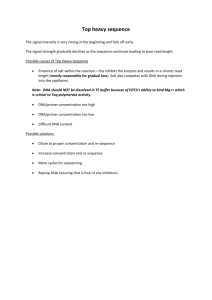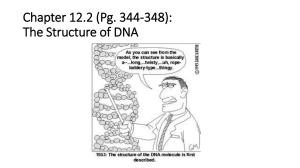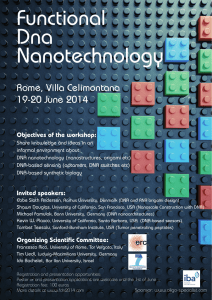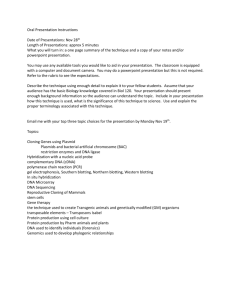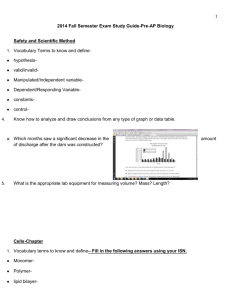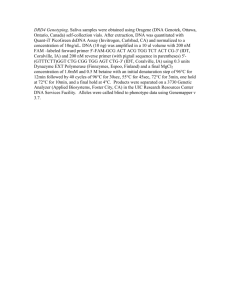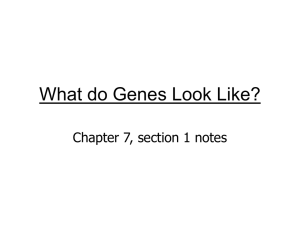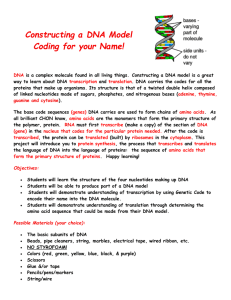DNA Puzzle Pieces Lab: Building a DNA Model
advertisement
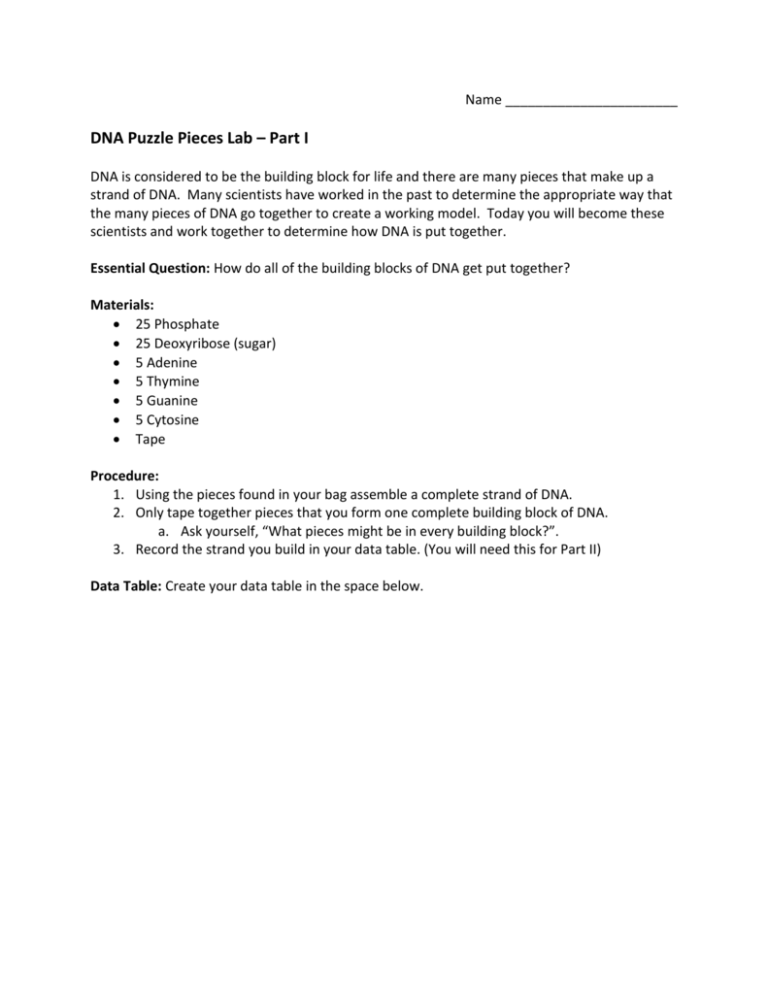
Name _______________________ DNA Puzzle Pieces Lab – Part I DNA is considered to be the building block for life and there are many pieces that make up a strand of DNA. Many scientists have worked in the past to determine the appropriate way that the many pieces of DNA go together to create a working model. Today you will become these scientists and work together to determine how DNA is put together. Essential Question: How do all of the building blocks of DNA get put together? Materials: 25 Phosphate 25 Deoxyribose (sugar) 5 Adenine 5 Thymine 5 Guanine 5 Cytosine Tape Procedure: 1. Using the pieces found in your bag assemble a complete strand of DNA. 2. Only tape together pieces that you form one complete building block of DNA. a. Ask yourself, “What pieces might be in every building block?”. 3. Record the strand you build in your data table. (You will need this for Part II) Data Table: Create your data table in the space below. White Board: Once you have created your DNA model you will need to recreate your Data Table to share with the class. Be prepared to show off your DNA model. Write down any important parts you discovered while constructing your DNA. Written Lab Report: State the experimental question in your own words and write a brief summary of what you did. Draw conclusions by answering the questions below. 1. Conclude: Overall what is the structure of DNA and what pieces are include in each building block (nucleotide)? 2. Conclude: How do the base pairs (nitrogenous bases) go together? 3. Conclude: How do the strands of DNA stay together? 4. Conclude: What holds the DNA strands together? 5. Apply: In your own words define the following terms. a. Deoxyribonucleic Acid: b. nucleotide: c. nitrogenous base: d. purine: e. pyrimidine: f. hydrogen-bond: 6. Extension: Assuming that you had 20 phosphates, 20 deoxyribose, 5 adenine, 5 guanine, 5 cytosine, and 5 thymine create a model of DNA. Think about all of the different parts and label them on your model. What would happen to the strand if you altered the way the bases pair?
